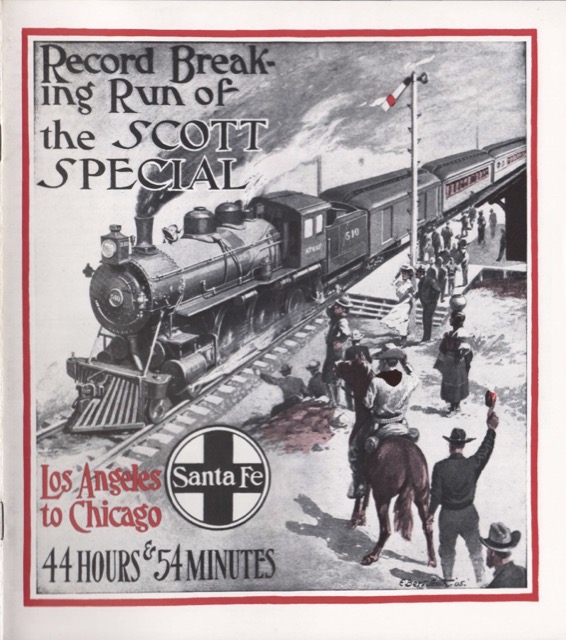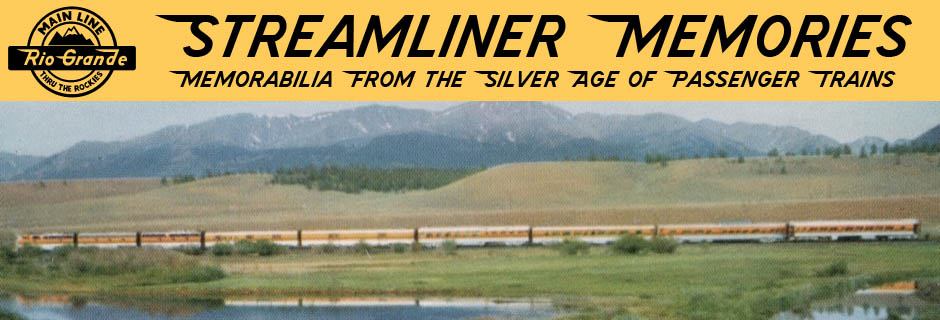This is Santa Fe’s reprint of a pamphlet commemorating a 1905 trip from Los Angeles to Chicago in 44 hours and 54 minutes. At that time, the fastest regularly scheduled trains took about 68 hours to cover that distance, and the fastest special train had done it in just under 58 hours.
 Click image to download a 9.8-MB PDF of this 16-page booklet.
Click image to download a 9.8-MB PDF of this 16-page booklet.
The train was chartered by Walter Scott, later known as “Death Valley Scotty,” for $5,500 (about $150,000 in today’s money) on the condition that the trip take less than 46 hours. The booklet says Scott was “reputed to be a very rich mine owner.” In fact, he was a con man who bilked wealthy New Yorkers out of tens of thousands of dollars by selling them shares in a phony gold mine. Scott obtained the money for the record-breaking run from another con man named Burdon Gaylord, who was also trying to get easterners to invest in gold mines.
The train used for the trip consisted of a baggage car, a diner, and a Pullman. At one point during the trip, the train covered 2.8 miles in one minute and 35 seconds for an average speed of 106 mph, which at the time was a world’s record. Of course, just 31 years later, the Super Chief began operating the same route on a 39-3/4 hour schedule.
Although this reprint was published in 1972 with a back page advertising Santa Fe’s modern freight service, it doesn’t say what year the original pamphlet was issued. Some sources date it to 1905, the year of the run. However, the booklet’s brief biographies of the nineteen engineers who drove the train on its remarkable journey notes that four had retired and three were deceased, which is a pretty high rate of turnover if the booklet was published less than six months after the run. The only authentic copies I can find are dated 1917.
